Private tours from Ho Chi Minh City
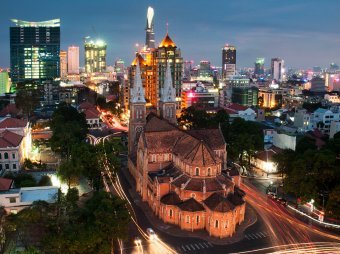
Ho Chi Minh City (private tour)
 Half day: Notre Dam Cathedral, Post Office, Opera House, Independence Palace, Ben Thanh Market, City Hall, Walking Street Half day: Notre Dam Cathedral, Post Office, Opera House, Independence Palace, Ben Thanh Market, City Hall, Walking Street
 Full day: War Museum, Botanical Garden, National Zoo, National Museum, Water puppets show Full day: War Museum, Botanical Garden, National Zoo, National Museum, Water puppets show
 Private tour by comfortable car Private tour by comfortable car
 English speaking guide English speaking guide
 Detailed program... Half day: 49usd/pax Full day: 79usd/pax Detailed program... Half day: 49usd/pax Full day: 79usd/pax
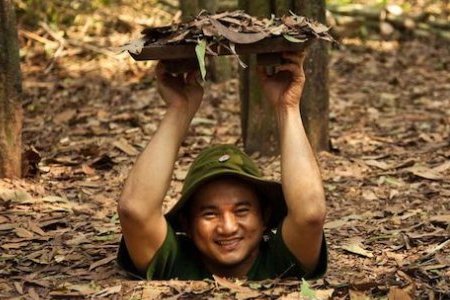
Cu Chi Tunnels tour
 Underground tunnels, kitchen, hospital, weapon factory, shooting range (optional) Underground tunnels, kitchen, hospital, weapon factory, shooting range (optional)
 English speaking guide, entrance ticket, private car English speaking guide, entrance ticket, private car
 Tapioca and hot tea for lucnh Tapioca and hot tea for lucnh
Go back to old days to witness the hardship and bravery of Vietnamese people during the war. Explore numerous tunnels, traps and tricks used by vietnamese soldiers during the war.
 Detailed program... Half day Cu Chi tour: 49usd/pax Detailed program... Half day Cu Chi tour: 49usd/pax

Mekong Delta (one day private tour)
 Option 1: One day tour - boat safari, traditional music show Option 1: One day tour - boat safari, traditional music show
 2 days/1 night - floating market 2 days/1 night - floating market
 3 days/ 2 nights 3 days/ 2 nights
 Private car, English speaking guide Private car, English speaking guide
Surrounded by the freshly green beauty of the rice paddies. Get lost in the amazing nature with a boat ride taking you to Khmer pagodas, floating market, and real Vietnamese villages.
 Detailed program... One day tour: 71usd /pax Detailed program... One day tour: 71usd /pax
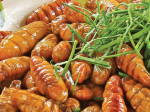 Crazy Vietnamese Food Tour Crazy Vietnamese Food Tour
 Dare to try dog, cat, snake, crocodile, silkworms and crickets? Dare to try dog, cat, snake, crocodile, silkworms and crickets?
 Comfortable private car Comfortable private car
 English speaking guide English speaking guide
 Hotel pick up/drop Hotel pick up/drop
 Detailed program Half day tour: 35usd /pax Detailed program Half day tour: 35usd /pax
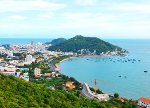
Vung Tau
 Vung Tau Beach, Jesus Statue, Lighthouse, Cable Car Vung Tau Beach, Jesus Statue, Lighthouse, Cable Car
 Comfortable private car Comfortable private car
 English speaking guide English speaking guide
 Hotel pick up/drop Hotel pick up/drop
 Detailed program... Half day tour: 75usd /pax Detailed program... Half day tour: 75usd /pax

Suoi Tien Park
 Full day private tour Full day private tour
 Explore the biggest Buddhist Amusement Park in World. Explore the biggest Buddhist Amusement Park in World.
 Private car Private car
 English speaking guide English speaking guide
 Detailed program... Half day tour: 59usd /pax Detailed program... Half day tour: 59usd /pax
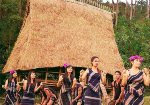
Daklak tour
 2 day private tour 2 day private tour
 Surprise yourself with the enormous land of coffee. Surprise yourself with the enormous land of coffee.
 Experience the life of Vietnamese ethnic groups, ride the elephant Experience the life of Vietnamese ethnic groups, ride the elephant
 English speaking guide, private car English speaking guide, private car
 Detailed program... 2 day tour: 75usd /pax Detailed program... 2 day tour: 75usd /pax
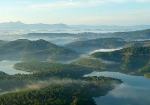
Da Lat tour
 2 days/1 night private tour 2 days/1 night private tour
 Visit the most romantic city of Vietnam - Da Lat Visit the most romantic city of Vietnam - Da Lat
 Crazy House, Love Valley, Waterfalls, Clay Village, Coffee Plantations, Residence of the last Emperor of Vietnam Crazy House, Love Valley, Waterfalls, Clay Village, Coffee Plantations, Residence of the last Emperor of Vietnam
 English speaking guide, private car English speaking guide, private car
One of the best place in Vietnam for couples to enjoy their honeymoon. Da Lat is the place of tranquility, history, and of coffee and best fresh fruit which is as good as other western countries.
 Detailed program... 2 day tour: 75usd /pax Detailed program... 2 day tour: 75usd /pax

Can Gio Tour
 1 day private tour tour 1 day private tour tour
 Partisan Military Base in the jungle Partisan Military Base in the jungle
 Boat safari, manroove forest, monkey island, crocodile farm, beach Boat safari, manroove forest, monkey island, crocodile farm, beach
 English-speaking guide, private car English-speaking guide, private car
Visit the monkey island, abandoned partisan base in the jungle, crocodile farm and Can Gio beach
 Detailed program... 2 day tour: 75usd /pax Detailed program... 2 day tour: 75usd /pax
You haven’t been to Vietnam yet if you don’t visit Ho Chi Minh city which was formally named Saigon under French colonists and later renamed Ho Chi Minh city in the honour of the leader of Communists in Vietnam- the Former President Ho Chi Minh.
Ho Chi Minh - the largest city of Vietnam is the city of harmony between traditional and modern influences: classical incense-filled pagodas and elegant shopping malls, skyscrapers, the finest hotels and the cheapest guesthouses, the classiest restaurants and the tastiest street stalls, the most glamorous boutiques and unsettled markets, shabby French colonial villas and conical-hatted street vendors plodding past karaoke bars and glitzy shops.
The city itself was the home for refugees fleeing war in the north back to the early 17th century and, conquered by the French colony in the mid 19th century and was the capital of the French colony of Cochichina and later of the independent Republic of South Vietnam 1955–1975.
Ho Chi Minh city which is considered as the melting pot of Vietnam consists of 24 districts (2013). Each district has its own history and speciality. The past is in the past and things remained today are really worth your visit. They are Ben Thanh market – one of Saigon’s icons and forms the heart of the downtown areas, Reunification Palace-the former Presidential Palace, War Remnants Museum, Opera House, Central post office, Notre Dame Cathedral, City Hall, etc.
 Reunification Palace (also known as Independence Palace) is the formerly South Vietnam's presidential palace whose architecture is the blend of traditional ritual and modern architecture, typical of the 60s, designed by the Vietnamese architect Ngo Viet Thu. The building is one of the stunning landmarks of Ho Chi Minh city, the famous historical witness which passed through the two fierce wars against the French and Amerrican colonist. Rooms and the exhibits of the building reminds visitors of important moments in the past of Vietnam, especially the war command room with its huge maps and old communication equipment, as well as the basement labyrinth. The building now functions as a museum, where visitors can view the F5E fighter plane which bombed the palace on 8thApril 1975 and tank 843 which led the final assault through the palace gate at 11.30AM on 30th April 1975. Reunification Palace (also known as Independence Palace) is the formerly South Vietnam's presidential palace whose architecture is the blend of traditional ritual and modern architecture, typical of the 60s, designed by the Vietnamese architect Ngo Viet Thu. The building is one of the stunning landmarks of Ho Chi Minh city, the famous historical witness which passed through the two fierce wars against the French and Amerrican colonist. Rooms and the exhibits of the building reminds visitors of important moments in the past of Vietnam, especially the war command room with its huge maps and old communication equipment, as well as the basement labyrinth. The building now functions as a museum, where visitors can view the F5E fighter plane which bombed the palace on 8thApril 1975 and tank 843 which led the final assault through the palace gate at 11.30AM on 30th April 1975.
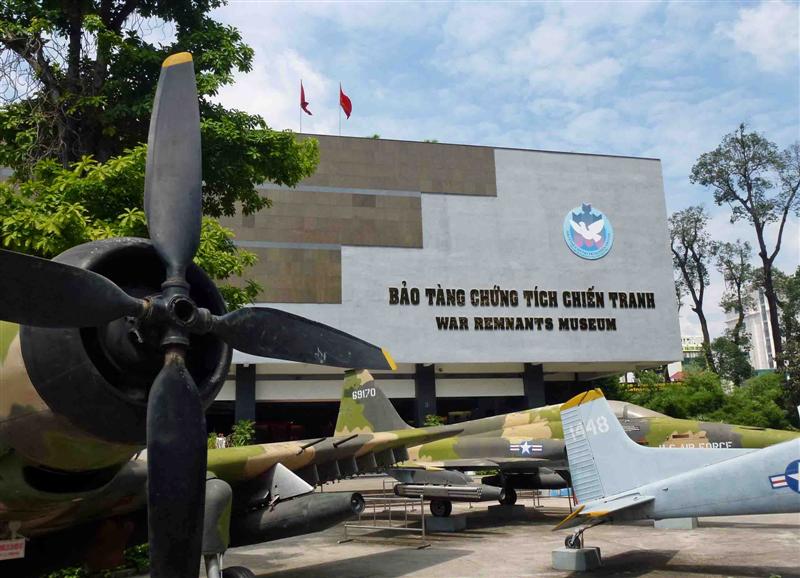 War Remnants Museum which tells you the most truthful stories in Vietnam (American) war, the disturbing display of man's cruelty including those of the infamous My Lai Massacre, shocking photographs, a simulated "tiger cage" used to house Viet Cong (Vietnamese Communists; VC) prisoners of the the flagrant French and South Vietnamese prisons on Phu Quoc and Con Son Islands, photos of children affected by US bombing and napalming. You’ll also have the rare chance to see some of the experimental weapons used in the war, which were at one time military secrets, such as the flechette, an artillery shell filled with thousands of tiny darts. You’ll also see a collection of posters and photographs showing support for the antiwar movement internationally on theground floor of the museum which somewhat upbeat display provides a counterbalance to the horrors upstairs. War Remnants Museum which tells you the most truthful stories in Vietnam (American) war, the disturbing display of man's cruelty including those of the infamous My Lai Massacre, shocking photographs, a simulated "tiger cage" used to house Viet Cong (Vietnamese Communists; VC) prisoners of the the flagrant French and South Vietnamese prisons on Phu Quoc and Con Son Islands, photos of children affected by US bombing and napalming. You’ll also have the rare chance to see some of the experimental weapons used in the war, which were at one time military secrets, such as the flechette, an artillery shell filled with thousands of tiny darts. You’ll also see a collection of posters and photographs showing support for the antiwar movement internationally on theground floor of the museum which somewhat upbeat display provides a counterbalance to the horrors upstairs.
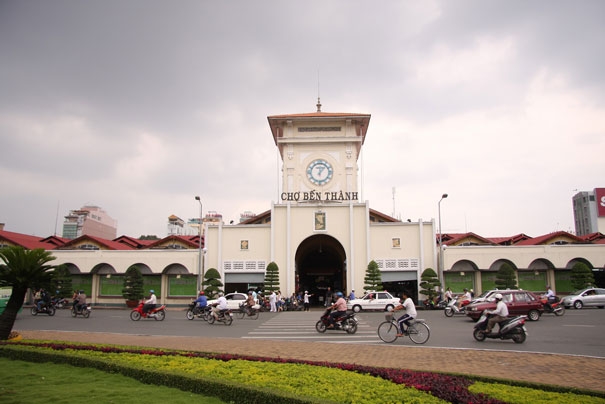 Ben Thanh Market – The oldest surviving market which once was a wet market created by street vendors by the early 17th from and now is one of symbols of Ho Chi Minh city. Ben Thanh has experienced many ups and downs of the city throughout the length of history. Built in 1870 by the French, the market was initially called Les Halles Centrales before being renamed Ben Thanh in 1912. Here you can find almost everything from Vietnamese traditional food like Pho, Hu Tiu, cakes, seafood , etc. to local, international brands of clothing, shoes, bags, jewelry , kitchen ware, grocery, sweets, Vietnamese coffee and a great choice of handicrafts, souvenirs. Being a bustling market in the daytime and a social center after sunset,Ben Thanh Market is absolutely a must-see attraction of the most metropolitan city of Vietnam. Ben Thanh Market – The oldest surviving market which once was a wet market created by street vendors by the early 17th from and now is one of symbols of Ho Chi Minh city. Ben Thanh has experienced many ups and downs of the city throughout the length of history. Built in 1870 by the French, the market was initially called Les Halles Centrales before being renamed Ben Thanh in 1912. Here you can find almost everything from Vietnamese traditional food like Pho, Hu Tiu, cakes, seafood , etc. to local, international brands of clothing, shoes, bags, jewelry , kitchen ware, grocery, sweets, Vietnamese coffee and a great choice of handicrafts, souvenirs. Being a bustling market in the daytime and a social center after sunset,Ben Thanh Market is absolutely a must-see attraction of the most metropolitan city of Vietnam.
 Saigon Notre-Dame Cathedral Basilica (Notre dame cathedral)- A magnificant double-towered building established by French colonists to serve the religious purpose during their conquest in Saigon Vietnam between 1863 and 1880. Located right at the Paris square of Ho Chi Minh, Notre Dame Cathedral attracts not only Catholics but also most tourists for its neo-Romanesque style architecture and a sacred atmosphere. This Cathedral was built on the base of an abandoned Vietnamese pagoda during the war. All building materials were imported from Marseilles and colored glass windows made in France’s Chartres Province, France. In the flower garden in front of the Cathedral, there is a statue of the Virgin Mary which once was reported to have shed tears that attracted thousands of people. The Cathedral was confered Saigon Notre-Dame Cathedral Basilica in 1960. This is one of the most stunning toursist attractions as well as the place for people to ease their mind from busy daily life and immerse in the tranquil religious atmosphere. Saigon Notre-Dame Cathedral Basilica (Notre dame cathedral)- A magnificant double-towered building established by French colonists to serve the religious purpose during their conquest in Saigon Vietnam between 1863 and 1880. Located right at the Paris square of Ho Chi Minh, Notre Dame Cathedral attracts not only Catholics but also most tourists for its neo-Romanesque style architecture and a sacred atmosphere. This Cathedral was built on the base of an abandoned Vietnamese pagoda during the war. All building materials were imported from Marseilles and colored glass windows made in France’s Chartres Province, France. In the flower garden in front of the Cathedral, there is a statue of the Virgin Mary which once was reported to have shed tears that attracted thousands of people. The Cathedral was confered Saigon Notre-Dame Cathedral Basilica in 1960. This is one of the most stunning toursist attractions as well as the place for people to ease their mind from busy daily life and immerse in the tranquil religious atmosphere.
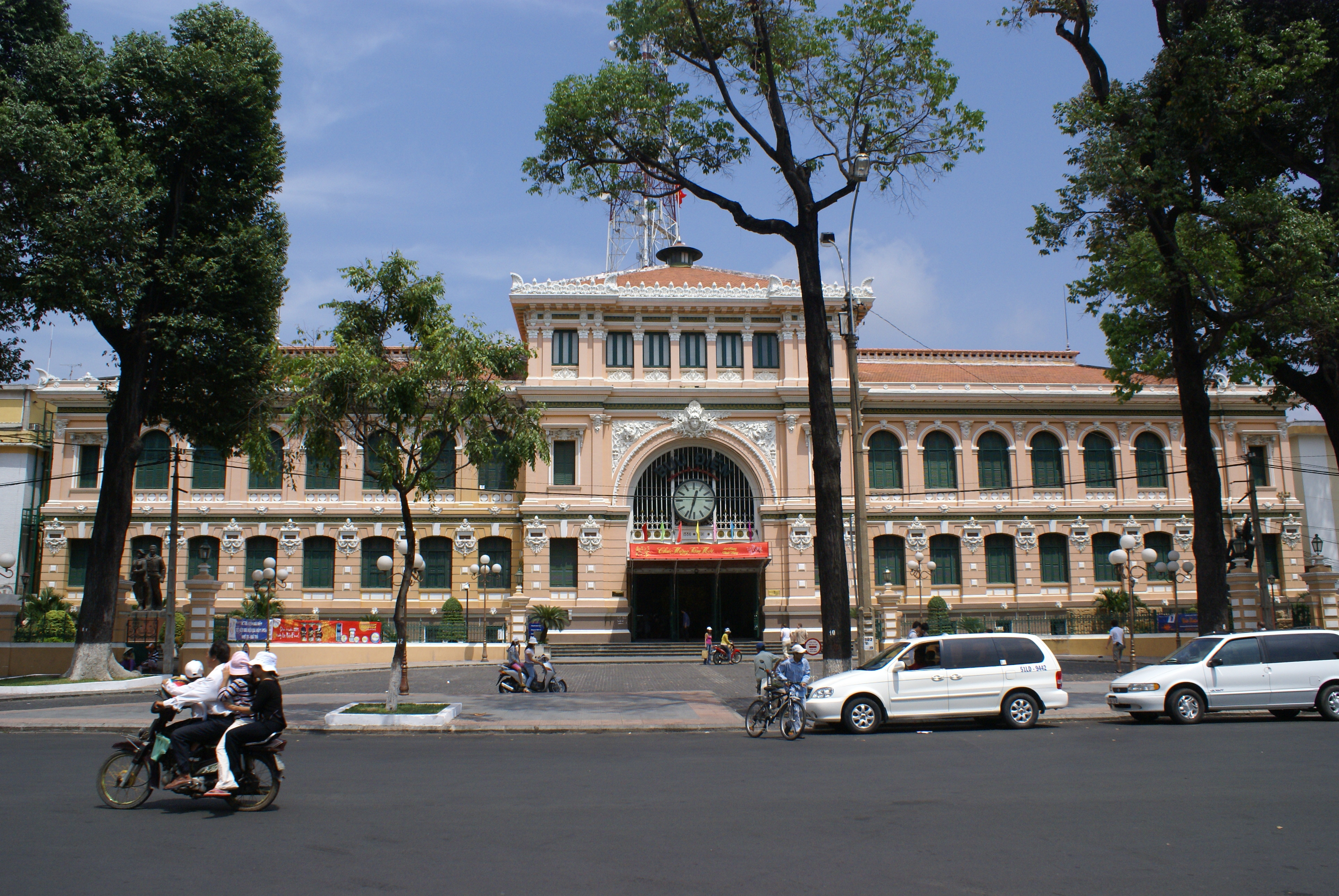 Saigon Central Post Office - situated right way across the Notre Dam Cathedral. Saigon Central Post Office was contructed between 1986 - 1891 when Vietnam was part of the French Indochina and designed by Gustave Eiffel. The typical colonial features are a mixture of Gothic, Renaissance and French influences from the exterior to interior decorations fascinates millions of tourists every year. You will be amazed by the marvellous historic maps of South Vietnam, Saigon - Cholon and a mosaic of Ho Chi Minh proudly placed the end of its barrel-vaulted hall. The Post Office now is in operation offers all kinds of traditional postal services like mailing, selling postcards or stamps and foreign money exchange. Saigon Central Post Office - situated right way across the Notre Dam Cathedral. Saigon Central Post Office was contructed between 1986 - 1891 when Vietnam was part of the French Indochina and designed by Gustave Eiffel. The typical colonial features are a mixture of Gothic, Renaissance and French influences from the exterior to interior decorations fascinates millions of tourists every year. You will be amazed by the marvellous historic maps of South Vietnam, Saigon - Cholon and a mosaic of Ho Chi Minh proudly placed the end of its barrel-vaulted hall. The Post Office now is in operation offers all kinds of traditional postal services like mailing, selling postcards or stamps and foreign money exchange.
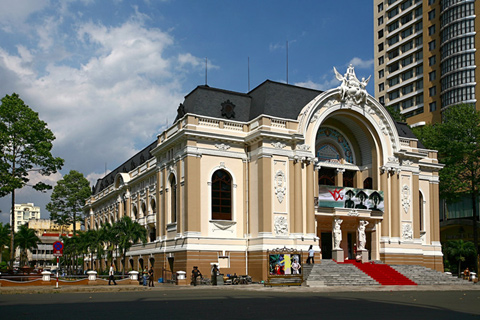 The Municipal Theatre of Ho Chi Minh City (Saigon opera House) - A classy example of French architecture in Vietnam. Built in 1897 by French architect Eugene Ferret, the 800 seat building functioned as the home of the Lower House assembly of South Vietnam after 1956, was again used as a theatre in 1975, and restored in 1995. All the materials for construction such as the applied ornament, balustrades, cartouches, and roof were imported directly from France. The theatre is equipped with state-of-the-art electric appliances, lighting and sound systems, and safety equipment due to its renovation on the occasion of 300th birthday of the city. Saigon opera House is now the stage for a variety of traditional and classical performances such as plays, concerts, ballet, opera, and Vietnamese traditional dance, especially, the popular A O show - a sophisticated cultural show featuring traditional music, dance and acrobatics illustrating a story about how a rural Vietnamese community adapts to urbanization. The Municipal Theatre of Ho Chi Minh City (Saigon opera House) - A classy example of French architecture in Vietnam. Built in 1897 by French architect Eugene Ferret, the 800 seat building functioned as the home of the Lower House assembly of South Vietnam after 1956, was again used as a theatre in 1975, and restored in 1995. All the materials for construction such as the applied ornament, balustrades, cartouches, and roof were imported directly from France. The theatre is equipped with state-of-the-art electric appliances, lighting and sound systems, and safety equipment due to its renovation on the occasion of 300th birthday of the city. Saigon opera House is now the stage for a variety of traditional and classical performances such as plays, concerts, ballet, opera, and Vietnamese traditional dance, especially, the popular A O show - a sophisticated cultural show featuring traditional music, dance and acrobatics illustrating a story about how a rural Vietnamese community adapts to urbanization.
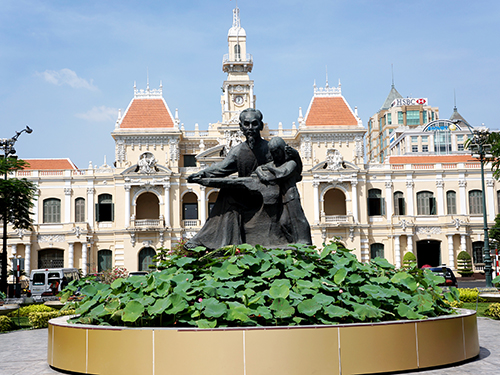
Saigon City Hall (Ho Chi Minh City People's Committee Head office) was built in 1902-1908 in a French colonial style, was first known as the Hotel de Ville in Paris. This place is a government working office and not open for toursists. Even though it's worthy to pay a visit. In front of the City Hall, Nguyen Hue walking street leading to Saigon river was built and opened to serve locals and tourists in Ho Chi Minh City. The new walking zone is the most beautiful and largest street in Ho Chi Minh City with colorful decoration, art lighting system and modern water foutain system. It will be interesting place to relax, take some good pictures and have great conversations with kind and friendly Viet people.
Temples in Ho Chi Minh
 Jade Emperor pagoda Built in 1909 in honour of the supreme Taoist god (the Jade Emperor or King of Heaven, Ngoc Hoang). This pagoda was built from bricks, its roof encrusted with elaborate tile work, the temple's statues, representing characters from both Buddhist and Taoist lore, are made from reinforced papier mâché. Inside the main building two especially fierce and menacing Taoist figures, phantasmal divinities and grotesque heroes and gods who dispense punishments for evil acts and rewards for good deeds such as Thanh Hoang, the Chief of Hell, The Four Big Diamonds ( Tu Dai Kim Cuong), Kim Hoa Thanh Mau - the Chief of All Women, Quan Am-the Goddess of Mercy, Dat Ma, the bearded Indian founder of Zen Buddhism, etc. This pagoda is a famous place in Ho Chi Minh for Locals and Tourists to go and pray to Buddha for a male heir and calmness in their mind. Jade Emperor pagoda Built in 1909 in honour of the supreme Taoist god (the Jade Emperor or King of Heaven, Ngoc Hoang). This pagoda was built from bricks, its roof encrusted with elaborate tile work, the temple's statues, representing characters from both Buddhist and Taoist lore, are made from reinforced papier mâché. Inside the main building two especially fierce and menacing Taoist figures, phantasmal divinities and grotesque heroes and gods who dispense punishments for evil acts and rewards for good deeds such as Thanh Hoang, the Chief of Hell, The Four Big Diamonds ( Tu Dai Kim Cuong), Kim Hoa Thanh Mau - the Chief of All Women, Quan Am-the Goddess of Mercy, Dat Ma, the bearded Indian founder of Zen Buddhism, etc. This pagoda is a famous place in Ho Chi Minh for Locals and Tourists to go and pray to Buddha for a male heir and calmness in their mind.
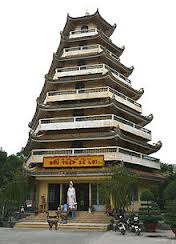
Giac Lam pagoda built in 1744 is one of the oldest historic Buddhist pagoda in Ho Chi Minh, Vietnam. In the front gargen, there is a Bodhi tree which was the gift of the famous 20th Sinhalese Theravada Buddhist monk from Sri Lanka Narada, known for his worldwide efforts in propagating the Dharm in 1953. Next to the tree stands a glistening white statue of compassionate Quan The Am Bo Tat on a lotus blossom, a symbol of purity. The seven-storey stupa which was built for the purpose of the storing the relics of the Buddha is one of the tallest Buddhist towers in the city and is a noted landmark of the city. Giac Lam Pagoda has 112 historic statues, made from wood with gold coatings painted onto the exterior, seven bronze statues and numerous glided figures. All of the statues, tables and the relic tower are hand crafted. The oldest statue is one of Gautama Buddha on a lotus seat that dates back to the 18th century. It is made of wood and stands 65 cm tall and 38 cm wide and is located in the dharma hall. Taoism and Confucianism can be found here like in many other Vietnamese temples.
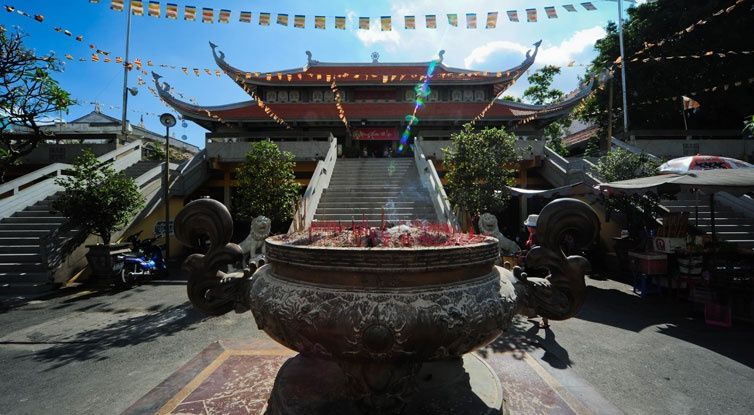 Vinh Nghiem pagoda - One of the largest pagodas in Ho Chi Minh city. Built between 1964 - 1971. It's the first pagoda in Vietnam with traditional Vietnamese architecture but built with concrete. It is a seven-floor, 40-metre high tower with one pair of large dragons, 27 pairs of small dragons, phoenixes and countless lotuses, bodhi leaves, waves, bats and mantras are all intricately inscribed on the walls. This pagoda is partly influenced by Japanese style with a large bell inside the temple was given to the Vietnamese by Japanese Buddhists during wartime to symbolize prayers for peace. The seven-storey tower is influenced by the Japanese Kwan-Yin Tower built with the assistance of Japan - Vietnam Friendshiop Association. People come here to pay homage to Siddhartha Gautama, Buddha himself, and Samantabhadra, the Lord of Truth and Manjusri. This place is the home of sanctuary and tranquility as well as a great place to learn about Vietnamese culture. Vinh Nghiem pagoda - One of the largest pagodas in Ho Chi Minh city. Built between 1964 - 1971. It's the first pagoda in Vietnam with traditional Vietnamese architecture but built with concrete. It is a seven-floor, 40-metre high tower with one pair of large dragons, 27 pairs of small dragons, phoenixes and countless lotuses, bodhi leaves, waves, bats and mantras are all intricately inscribed on the walls. This pagoda is partly influenced by Japanese style with a large bell inside the temple was given to the Vietnamese by Japanese Buddhists during wartime to symbolize prayers for peace. The seven-storey tower is influenced by the Japanese Kwan-Yin Tower built with the assistance of Japan - Vietnam Friendshiop Association. People come here to pay homage to Siddhartha Gautama, Buddha himself, and Samantabhadra, the Lord of Truth and Manjusri. This place is the home of sanctuary and tranquility as well as a great place to learn about Vietnamese culture.
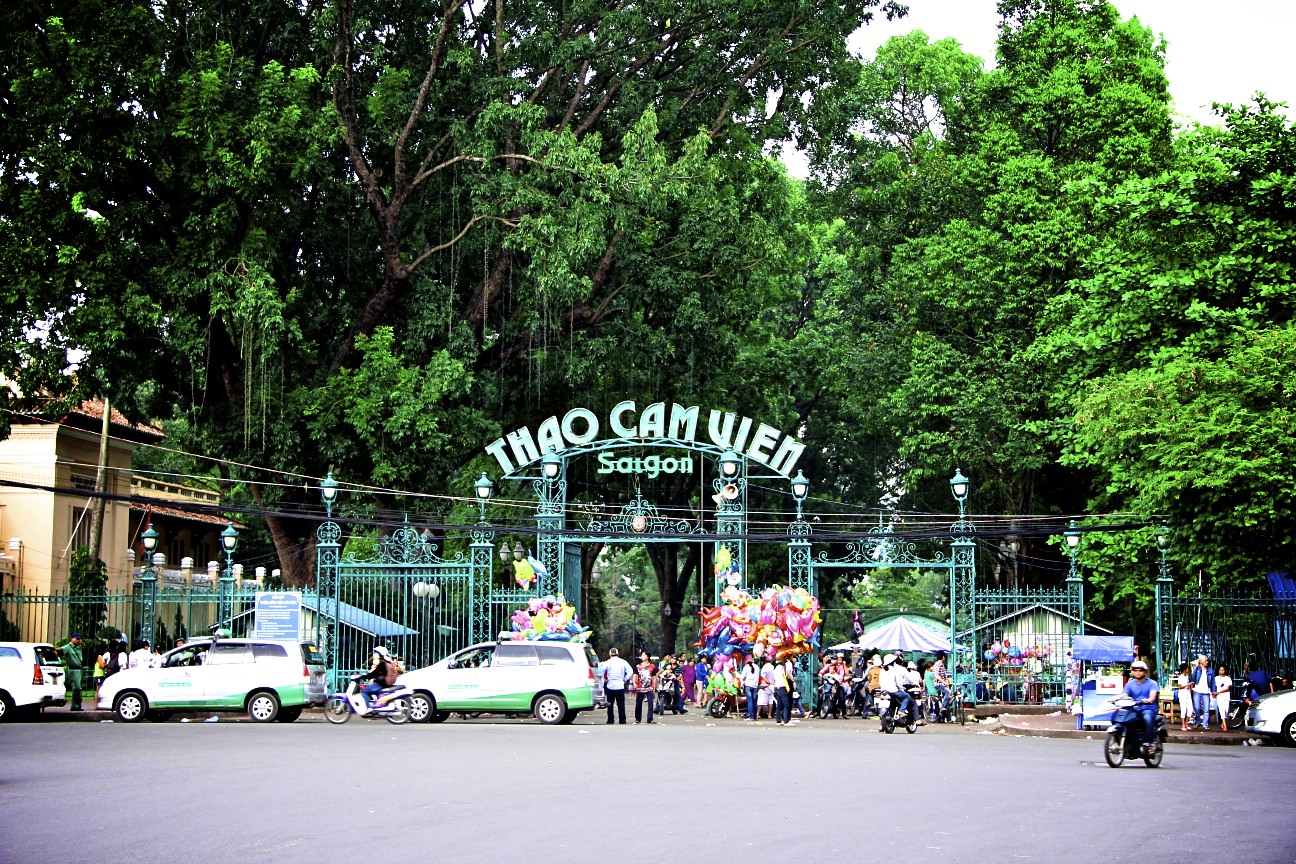 Saigon zoo and Botanical gargen - The largest zoo and Botanical garden in Vietnam. Ranked the eighth oldest zoo in the world. Established in 1865 during the time Cochichina was part of French colony. Located in the middle of the bustling urban center D1, It is the home of 590 animals of 125 species and 1,830 trees and plants of 260 species, some of which are over 100 years old. This includes 20 species of orchid, 32 species of cactus and 34 species of bonsai. The botanical garden contains many species of rare and valuable plants such as species of cacti, ferns and plants that have been imported from Africa and America. The zoo has many kinds of mammals, reptiles, and birds such as: monkeys, tigers, leopards, lions, gibbons, deer, elephants, etc. many exotic species, some of which are seen in Vietnam for the first time, such as: Hippopotamus amphibius, Choeropsis liberiensis, Panthera onca, Struthio camelus, Phoenicopterus ruber. It also contains the Museum of Vietnamese History, which showcases Vietnamese History through all periods: Prehistoric Period (500,000 years ago to 2879 BC). Metal Age (2879–179 BC), including artifacts related to the Dong Son culture of northern Vietnam and the Sa Huynh culture of central Vietnam, Chinese Domination and Struggle for National Independence in the Red River Valley (179 BC – 938 AD) Stone and bronze sculptures and other artifacts of Champa, Stone sculptures of Cambodia (9th–12th centuries) and numerous exhibits from various Dynasties: Ngo, Dinh, Le, Ly, Nguyen of Vietnam, history of South Vietnam, and a monument to Vietnamese people who were killed in World War I. Saigon zoo and Botanical gargen - The largest zoo and Botanical garden in Vietnam. Ranked the eighth oldest zoo in the world. Established in 1865 during the time Cochichina was part of French colony. Located in the middle of the bustling urban center D1, It is the home of 590 animals of 125 species and 1,830 trees and plants of 260 species, some of which are over 100 years old. This includes 20 species of orchid, 32 species of cactus and 34 species of bonsai. The botanical garden contains many species of rare and valuable plants such as species of cacti, ferns and plants that have been imported from Africa and America. The zoo has many kinds of mammals, reptiles, and birds such as: monkeys, tigers, leopards, lions, gibbons, deer, elephants, etc. many exotic species, some of which are seen in Vietnam for the first time, such as: Hippopotamus amphibius, Choeropsis liberiensis, Panthera onca, Struthio camelus, Phoenicopterus ruber. It also contains the Museum of Vietnamese History, which showcases Vietnamese History through all periods: Prehistoric Period (500,000 years ago to 2879 BC). Metal Age (2879–179 BC), including artifacts related to the Dong Son culture of northern Vietnam and the Sa Huynh culture of central Vietnam, Chinese Domination and Struggle for National Independence in the Red River Valley (179 BC – 938 AD) Stone and bronze sculptures and other artifacts of Champa, Stone sculptures of Cambodia (9th–12th centuries) and numerous exhibits from various Dynasties: Ngo, Dinh, Le, Ly, Nguyen of Vietnam, history of South Vietnam, and a monument to Vietnamese people who were killed in World War I.
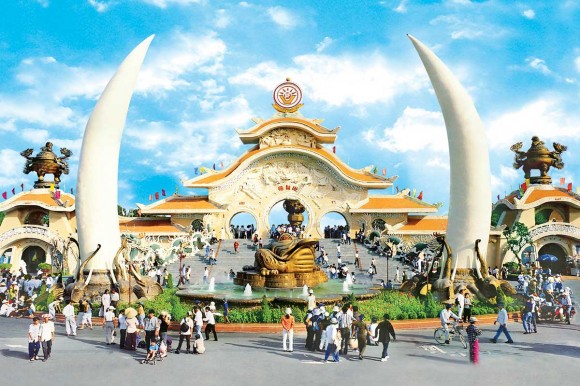 Suoi Tien amusement park - the world's first Buddhist waterslide park. Started from a barren, uninhabited land which had a natural stream flowing across endemic forest and natural scenery. The name “Suoi Tien” (Fairy Stream) derived from a story about 7 sacred girls died and became fairies in this land. Later the land was turned into a forestry farm before being developed into what we see today – the biggest cultural theme park of Ho Chi Minh city. The main themes of the park are about Buddism with buildings of worship Kings Hung, a man-made Hell displaying life after death depending on your karma; legends of Vietnamese people such as: Thanh Giong, Lac Long Quan - Au Co, and Chu Dong Tu – Tien Dung which are twisted into all physical work of statues, monuments, etc. and numerous of cultural festivals held on the occasions of Lunar New Year, Mid-Autumn Festival and Hung King Anniversary. There is no exagerration when saying that this is Vietnam Disneyland where gathers all the world class entertainment facilities: numerous kinds of game, from scary, thrilling to adventurous ones such as: Mystery of the Forest, 4D Theatre, Roller Coaster and Air Bycicle. Also, a pond with over 1,500 crocodiles where visitors are invited to feed them with raw meat attached to fishing poles makes this place a must-see attraction and wonderful amusement park in Ho Chi Minh city. Suoi Tien amusement park - the world's first Buddhist waterslide park. Started from a barren, uninhabited land which had a natural stream flowing across endemic forest and natural scenery. The name “Suoi Tien” (Fairy Stream) derived from a story about 7 sacred girls died and became fairies in this land. Later the land was turned into a forestry farm before being developed into what we see today – the biggest cultural theme park of Ho Chi Minh city. The main themes of the park are about Buddism with buildings of worship Kings Hung, a man-made Hell displaying life after death depending on your karma; legends of Vietnamese people such as: Thanh Giong, Lac Long Quan - Au Co, and Chu Dong Tu – Tien Dung which are twisted into all physical work of statues, monuments, etc. and numerous of cultural festivals held on the occasions of Lunar New Year, Mid-Autumn Festival and Hung King Anniversary. There is no exagerration when saying that this is Vietnam Disneyland where gathers all the world class entertainment facilities: numerous kinds of game, from scary, thrilling to adventurous ones such as: Mystery of the Forest, 4D Theatre, Roller Coaster and Air Bycicle. Also, a pond with over 1,500 crocodiles where visitors are invited to feed them with raw meat attached to fishing poles makes this place a must-see attraction and wonderful amusement park in Ho Chi Minh city.
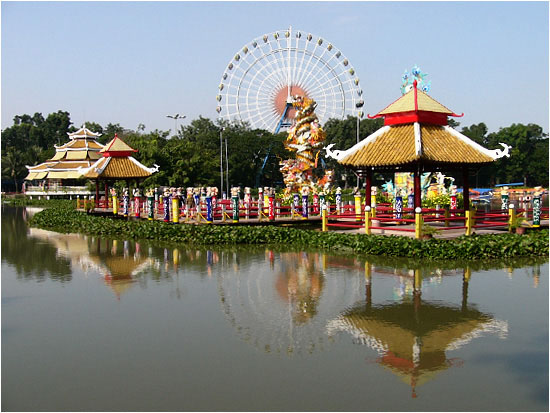 Dam Sen Park - Top 10 water park- Asia of 2014. Located in District 11, just 10 minutes from the city center. Transformed from a wild marshland, Dam Sen park now is a great place for your family and children where features Aquatic games and activities like Water fountains, water pupetr, water games, truly unique water slide experiences (including the amazing "Space Bowl"), etc. a mix of western flower garden, ancient Rome-themed square, cultural square, water musical scene, bowling area, sport services area, crayfish fishing lake, Thuy Ta restaurant, children's play area, picture lamps, nine fragment edge, Monorail station, Monorail track and Tropical garden contained more than 70 species of birds and 20 species of animals. Dam Sen Park - Top 10 water park- Asia of 2014. Located in District 11, just 10 minutes from the city center. Transformed from a wild marshland, Dam Sen park now is a great place for your family and children where features Aquatic games and activities like Water fountains, water pupetr, water games, truly unique water slide experiences (including the amazing "Space Bowl"), etc. a mix of western flower garden, ancient Rome-themed square, cultural square, water musical scene, bowling area, sport services area, crayfish fishing lake, Thuy Ta restaurant, children's play area, picture lamps, nine fragment edge, Monorail station, Monorail track and Tropical garden contained more than 70 species of birds and 20 species of animals.
Cu Chi tunnels - the legendary tunnel network symbolyzing the tenacious spirit of Vietnamese people
Can Gio - a UNESCO Biosphere Reserve site and historcal place - the "Green lungs" of Ho Chi Minh city.
|
|
Our team:
 Emily Emily
Ho Chi Minh City
Organization of tours in Vietnam
Daily tours from Ho Chi Minh City:
Mekong Delta - from $21
Cu Chi Tunnels - from $15
Can Gio - from $15
Suoi Tien - from $12
Our cars for rent:
 Book a private car with driver Book a private car with driver
from $37/day
See all cars...
25 years
experience |
0
complains |
37
vehicles |
Impressions of Vietnam:
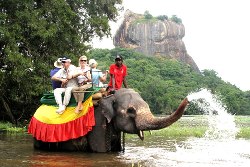 Elephant ride Elephant ride
|
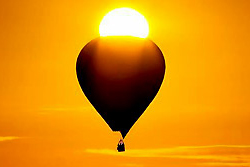 Air balloon Air balloon
|
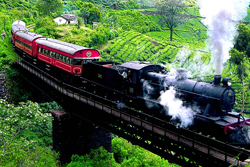 Trains Trains
|
 Rafting Rafting |
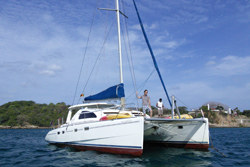 Yacht Yacht |
 Surfing Surfing |
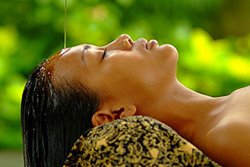 Spa Spa |
 Diving Diving |
|